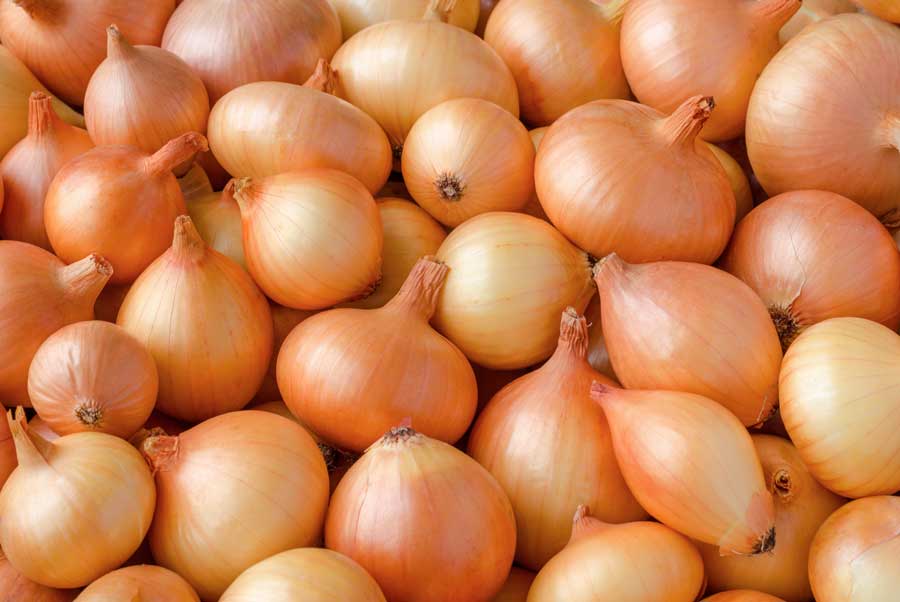Onions (Allium cepa) are one of the world’s oldest cultivated plants. A herbaceous, biennial grown throughout the world for its edible bulb, the onion is likely native to south-western Asia.
Ancient Egyptians regarded onion bulbs as a symbol of the universe, and Julia Child is famously quoted as saying: “It’s hard to imagine a civilisation without onions; in one form or another, their flavour blends into almost everything in the meal except the dessert.” But we beg to differ on the last point.
Growing regions and harvest
Brown onions are a variety within the Allium family, which comprises more than 300 species, and are cultivated year-round in most Australian states, with the majority of production taking place in South Australia and Tasmania. Approximately 300 commercial onion growers operate in Australia, cultivating varieties including Short Day, Early Long Day, Intermediate, Open Pollinated, and Hybrid, with most Australian onions being Short Day or Intermediate.
The most popular (Short Day) onions are primarily grown in Queensland and New South Wales and are planted from February to May, with harvest starting in September. Intermediate onions, grown in southern states, are planted from May to August for a late November to March harvest.
Onions take three to six months to germinate from seed to bulb, with harvesting occurring when 50 to 80 per cent of the tops have fallen.
Flavour profile and culinary uses
Brown onions are an excellent all-round onion for cooking. The natural sweetness increases the longer they are cooked, making them perfect as an everyday base for caramelising, sauces, or grilling on the BBQ.
Using the whole onion not only offers myriad flavours to explore, but also makes it a sustainable, zero-waste ingredient. You can use onion skins and the outer thicker skins that are often discarded to make pickles or to flavour stocks and sauces. You can dehydrate, char, and blitz skins to create garnish dust or roll fresh curd or labneh in.
It can also be blended with cultured butter to make a compound butter. Dehydrated skins can be combined with water, kombu, soy, and mirin to create a vegan kombu dashi.
Exploring sweet applications is another opportunity for culinary professionals. We’ve worked with leading Australian chefs to use onion in desserts. Karena Armstrong created an onion ice-cream sandwich for us; Telina Menzies and the chefs at Australian Venue Co. served up an onion tarte tatin, and the team at Camperdown Commons whipped up a caramelised onion chocolate mousse.
Beyond flavour, onions contribute valuable nutritional benefits to dishes. They are a rich source of antioxidants, prebiotic fibre, and vitamin C, adding not just taste but also health benefits to dishes. Just half a brown onion (75g) counts as one serve of vegetables.
Storage
Select firm brown onions with dry, papery skins and avoid those with green shoots or signs of decay. Onions should be kept at room temperature in a well-ventilated area away from bright light and never in plastic bags. Keep onions separate from potatoes to prevent moisture and ethylene gas absorption. Refrigerate unused portions for up to four days.

